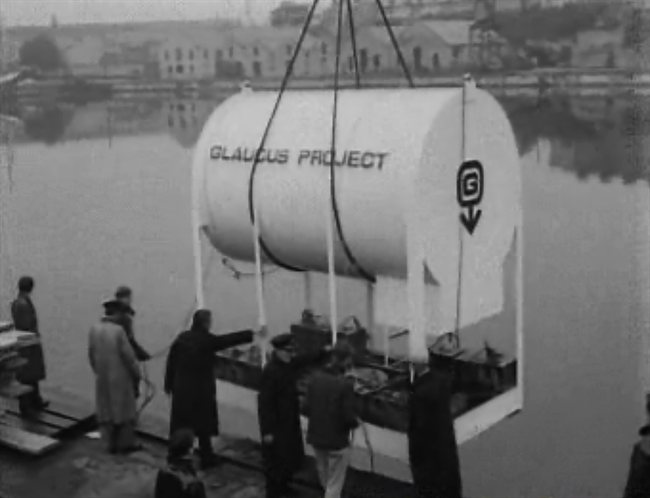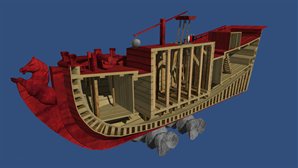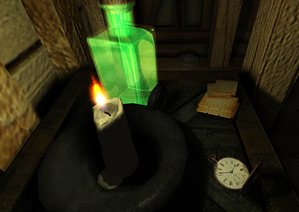Bringing the underwater history of Plymouth Sound back to life
By Professor Bob Stone, School of EECE
 Researchers, students and technical support staff within the Human Interface Technologies Team at the School of Electronic, Electrical and Computer Engineering (EECE) are working with colleagues at Promare (a not-for-profit organisation established in 2001 to promote worldwide marine research and exploration) to visualise the maritime heritage of Plymouth Sound. The aim of the project is to provide future students studying simulation and virtual reality with a wide area 3D environment which they can populate with interactive and information-rich 3D assets relating to maritime heritage. Another aim is to provide interactive concept demonstrators to support the Promare organisation in its ambition to establish a maritime heritage centre in the region. Plymouth Sound is an area littered with historical artefacts and wrecks, from a ditched WWII Lancaster bomber and Sunderland seaplanes to ancient wooden ships, ceramics and pottery and cannons (see http://www.promare.co.uk/ships/index.htm).
Researchers, students and technical support staff within the Human Interface Technologies Team at the School of Electronic, Electrical and Computer Engineering (EECE) are working with colleagues at Promare (a not-for-profit organisation established in 2001 to promote worldwide marine research and exploration) to visualise the maritime heritage of Plymouth Sound. The aim of the project is to provide future students studying simulation and virtual reality with a wide area 3D environment which they can populate with interactive and information-rich 3D assets relating to maritime heritage. Another aim is to provide interactive concept demonstrators to support the Promare organisation in its ambition to establish a maritime heritage centre in the region. Plymouth Sound is an area littered with historical artefacts and wrecks, from a ditched WWII Lancaster bomber and Sunderland seaplanes to ancient wooden ships, ceramics and pottery and cannons (see http://www.promare.co.uk/ships/index.htm).
EECE student David Nash, who is approaching his third year of study with the School in October, is working with PhD student Cheng Qian to process a significant amount of digital terrain model (DTM) data, obtained from the Digimap academic online resource site, to build the 3D model of Plymouth Sound. He will then populate that environment with some of the key man-made features, including the Breakwater and Fort, the Citadel, Smeaton’s Tower lighthouse and so on. The 3D terrain area covers Whitsand Bay, the location of one of the School’s previous projects – the Virtual Scylla (2006) – an ex-Royal Navy frigate scuttled by the National Marine Aquarium to become Europe’s first artificial reef, and Wembury Bay, the site of two other projects – Virtual Wembury and the 1909 docks that never were (www.virtual-wembury.net). Also included, further east along the coast is Bolt Head, where EECE Computer Technician Cecil Smith is, in his free time, helping to recreate the interior of the abandoned Cold War bunker, built on the site of an old RAF airbase and Ground-Controlled Interception Radar Station.
As well as the Scylla and Wembury Docks, the first two projects to feature in this 3D database relate to two historical events, separated in time by nearly 200 years.
 The first is a reconstruction of a vessel called the Maria being developed by EECE PhD students Jamie White and Cheng Qian. Purchased by a carpenter called John Day in the 1770s for £340, this 31-foot wooden sloop entered the history books as being host to the first recorded submariner fatality. Fitted with a wooden-beamed chamber containing around “75 hogsheads” of air (24.5m3, allegedly sufficient for 24 hours life support), the Maria was filled with (initially) 10 tons of limestone (although another 20 tons of rocks from local quarries had to be added through hastily-removed deck panels on the day of the dive). To allow the Maria to surface after the experiment, netted groups of 21-ton rocks were to be released by undoing bolts within the chamber. The Maria was towed from Plymouth’s Sutton Harbour to Firestone Bay on June 20th 1774. Day boarded the Maria carrying a hammock, a watch, a candle, a bottle of water and some biscuits. The Maria “submerged” stern first and her disappearance was followed by a major disturbance on the surface, indicative of the escape of a considerable amount of air from an underwater source. After three days of effort by 200 dockyard workers, the salvage operation was abandoned. Believing John Day to be in a state of suspended animation due to the low temperatures of the depths of Firestone Bay, a well-published MD by the name of Falck sponsored a month of additional intensive effort to raise the Maria. Despite locating the remains of the wreck, his mission came to nothing. Working with colleagues at ProMare, an accurate 3D model of the Maria has been produced, with the future aim of reproducing the vessel’s final dive from external and internal perspectives.
The first is a reconstruction of a vessel called the Maria being developed by EECE PhD students Jamie White and Cheng Qian. Purchased by a carpenter called John Day in the 1770s for £340, this 31-foot wooden sloop entered the history books as being host to the first recorded submariner fatality. Fitted with a wooden-beamed chamber containing around “75 hogsheads” of air (24.5m3, allegedly sufficient for 24 hours life support), the Maria was filled with (initially) 10 tons of limestone (although another 20 tons of rocks from local quarries had to be added through hastily-removed deck panels on the day of the dive). To allow the Maria to surface after the experiment, netted groups of 21-ton rocks were to be released by undoing bolts within the chamber. The Maria was towed from Plymouth’s Sutton Harbour to Firestone Bay on June 20th 1774. Day boarded the Maria carrying a hammock, a watch, a candle, a bottle of water and some biscuits. The Maria “submerged” stern first and her disappearance was followed by a major disturbance on the surface, indicative of the escape of a considerable amount of air from an underwater source. After three days of effort by 200 dockyard workers, the salvage operation was abandoned. Believing John Day to be in a state of suspended animation due to the low temperatures of the depths of Firestone Bay, a well-published MD by the name of Falck sponsored a month of additional intensive effort to raise the Maria. Despite locating the remains of the wreck, his mission came to nothing. Working with colleagues at ProMare, an accurate 3D model of the Maria has been produced, with the future aim of reproducing the vessel’s final dive from external and internal perspectives.
 The second event took place in September 1965, when two British Sub-Aqua Club divers, Colin Irwin and John Heath, spent a week living within a 2-ton, 3.7m long and 2.1m diameter cylinder called GLAUCUS at a depth of 10.7m (35ft), just off the Plymouth Breakwater. One of the aims of this project was to demonstrate that living in underwater habitats could be achieved on a much smaller budget than that being expended at the time by, for example, Jacques Cousteau’s Conshelf Project team. The GLAUCUS cylinder was supported by a set of legs, themselves attached to a substantial ballast tray. Access to the habitat was via a small open hatch which enabled other divers to deliver food and supplies. Air was provided to the GLAUCUS by a series of onboard air tanks with CO2 scrubbing trays mounted within the structure. The project was committed to a short film by British Pathé which is still available today. Today, the deteriorating remains of the GLAUCUS lie 12 metres down on the seabed of Plymouth Sound, just a few metres from the Breakwater Fort—a sad end for an important price of underwater history. The VR project is recreating the “GLAUCUS experience” by allowing users to “dive” down to a 3D recreation of the habitat and to explore its cramped interior. Relevant information and historical details are being provided by ProMare colleagues and Colin Irwin (University of Liverpool), the original designer and one of the 1960s divers.
The second event took place in September 1965, when two British Sub-Aqua Club divers, Colin Irwin and John Heath, spent a week living within a 2-ton, 3.7m long and 2.1m diameter cylinder called GLAUCUS at a depth of 10.7m (35ft), just off the Plymouth Breakwater. One of the aims of this project was to demonstrate that living in underwater habitats could be achieved on a much smaller budget than that being expended at the time by, for example, Jacques Cousteau’s Conshelf Project team. The GLAUCUS cylinder was supported by a set of legs, themselves attached to a substantial ballast tray. Access to the habitat was via a small open hatch which enabled other divers to deliver food and supplies. Air was provided to the GLAUCUS by a series of onboard air tanks with CO2 scrubbing trays mounted within the structure. The project was committed to a short film by British Pathé which is still available today. Today, the deteriorating remains of the GLAUCUS lie 12 metres down on the seabed of Plymouth Sound, just a few metres from the Breakwater Fort—a sad end for an important price of underwater history. The VR project is recreating the “GLAUCUS experience” by allowing users to “dive” down to a 3D recreation of the habitat and to explore its cramped interior. Relevant information and historical details are being provided by ProMare colleagues and Colin Irwin (University of Liverpool), the original designer and one of the 1960s divers.
These projects have attracted the attention of the Royal Navy’s National Museum in Portsmouth who is in the process of signing a collaboration agreement with the University. One early ambition of this collaboration is to involve students in the digital reconstruction and interpretation of two WWI vessels, the HMS Caroline and the HMS M33 so that interactive exhibits can be presented to the general public during the WWI anniversary events next year.
More details about the HIT Team’s Digital Heritage projects can be found by downloading a summary pamphlet at www.birmingham.ac.uk/stone.